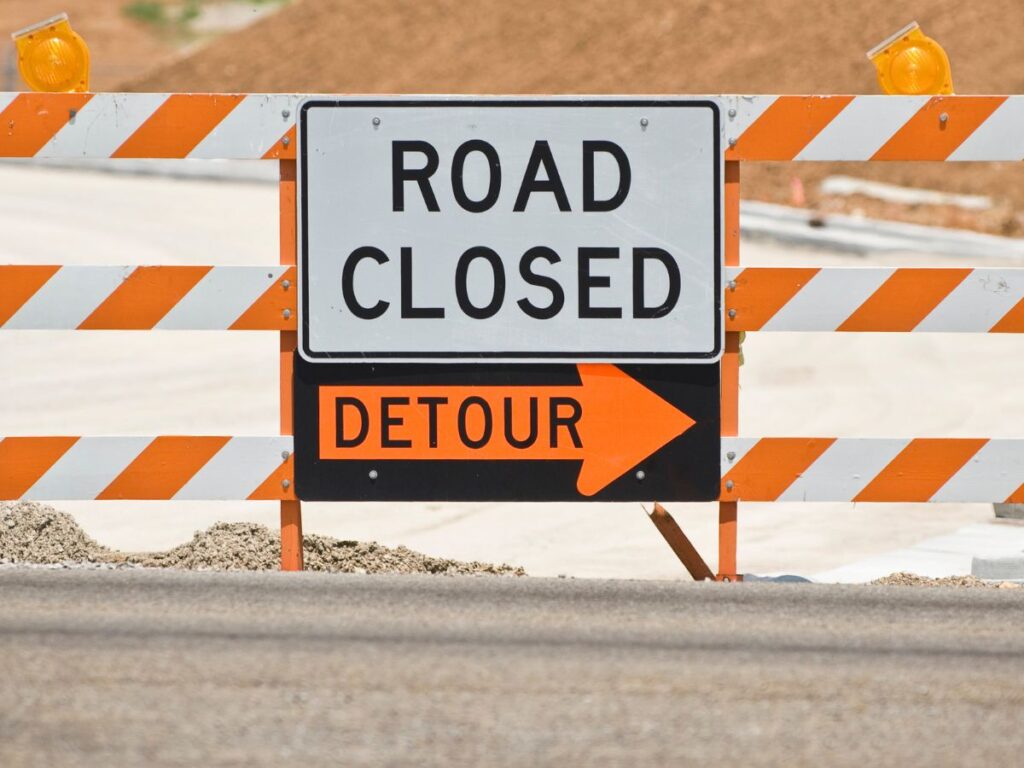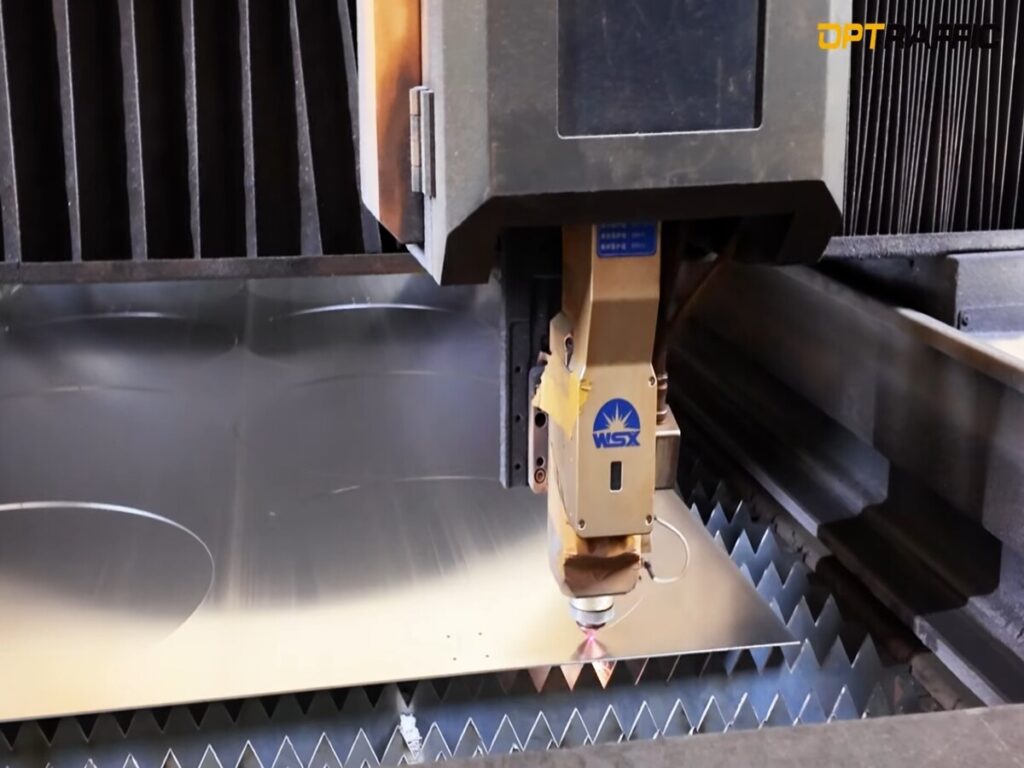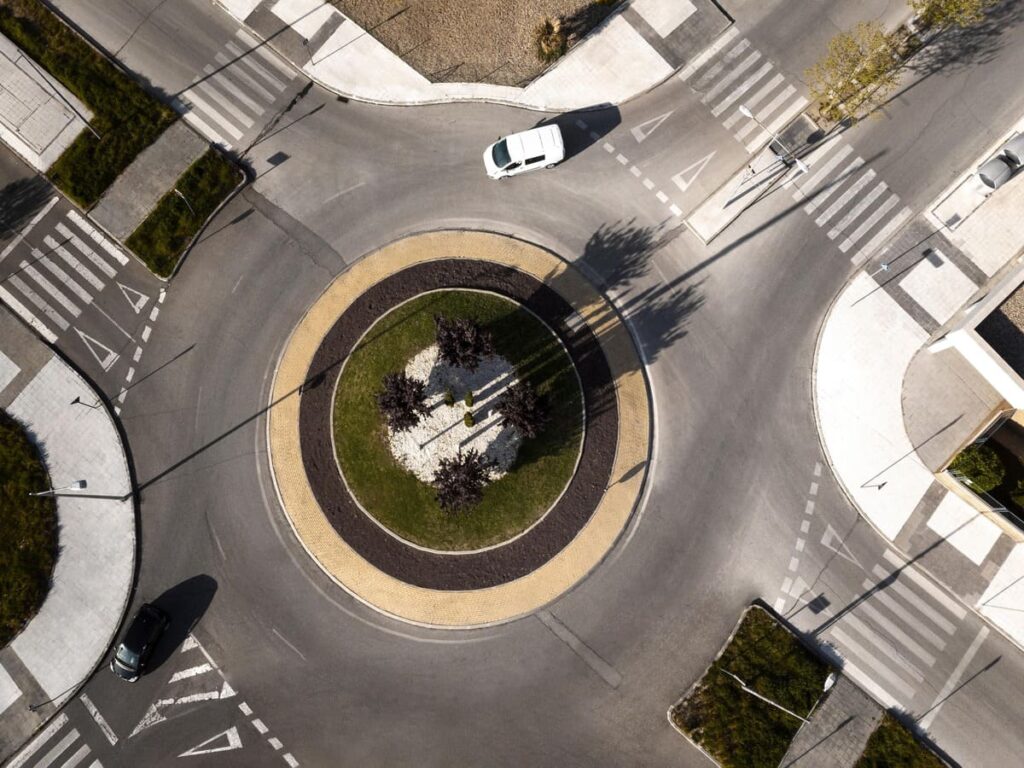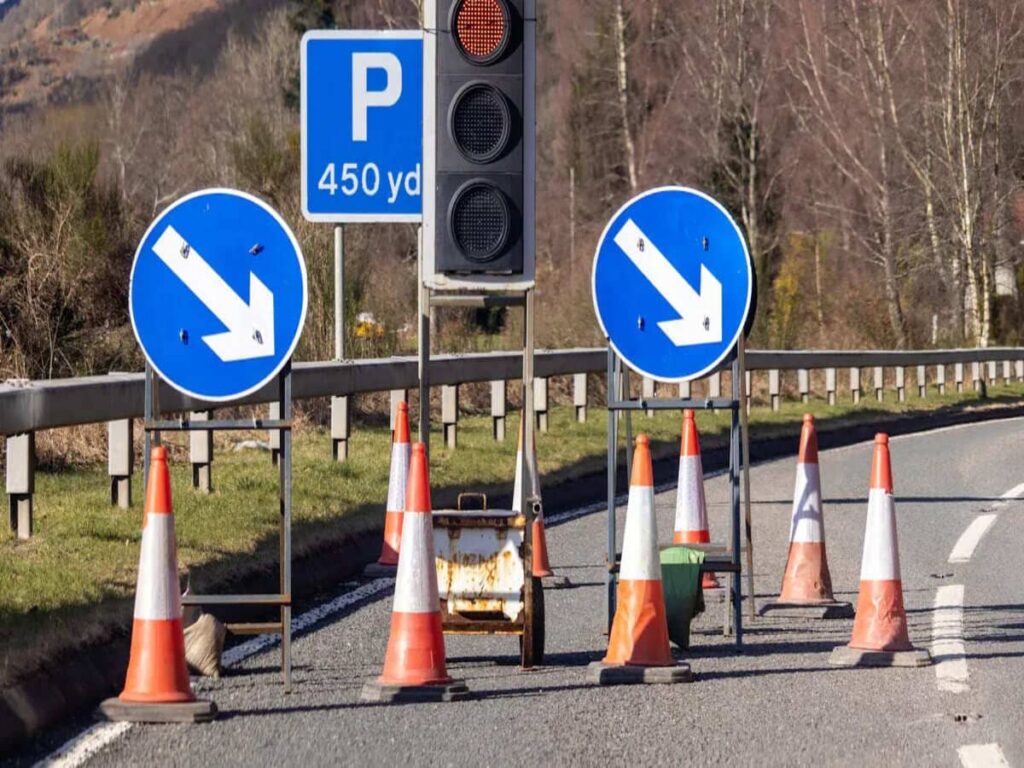
Le Canada n'utilise pas le mutcd pour panneaux routiers. Plutôt, Le Canada a son propre système d'avertissement et de panneaux de circulation routière réglementaires. Les panneaux de circulation routière standard sont cruciaux pour la sécurité et les voyages en douceur. Des études montrent que les panneaux de circulation routière d'avertissement du Canada aident les conducteurs à mieux comprendre les informations et à réagir plus rapidement. Ces panneaux de signalisation routiers sont conçus pour répondre aux besoins spécifiques de chaque région, y compris les signes bilingues en anglais et en français. Les conducteurs rencontrent ces panneaux de signalisation routiers dans chaque province. Les panneaux de circulation routière d'avertissement du Canada réduisent la confusion et améliorent la sécurité sur les routes. Ces signes diffèrent de ceux utilisés dans d'autres pays.
Principaux à retenir
- Le Canada a son propre manuel de dispositifs de contrôle de la circulation uniformes (Mutcdc). Il n'utilise pas les États-Unis. Mutcd. Cela aide à faire fonctionner les panneaux de route avec les deux langues et le système métrique.
- Les panneaux de route canadiens utilisent des symboles faciles à voir et des couleurs vives. Ils utilisent également des unités métriques. Cela aide les conducteurs à comprendre les panneaux et à rester en sécurité partout au Canada.
- Les provinces peuvent modifier les règles et les signes pour leurs propres besoins. Le Québec a les règles les plus strictes d'utilisation du français sur les signes.
- Signes près des États-Unis. La frontière montre souvent des unités métriques et impériales. Cela aide les voyageurs des deux pays.
- Le Canada met à jour et corrige souvent les panneaux routiers. Cela garde les signes clairs et sûrs. Il aide également les panneaux à travailler avec de nouvelles choses comme les véhicules automatisés.
Les normes des panneaux routiers du Canada

Mutcdc et son rôle
Le Canada utilise le manuel des dispositifs de contrôle de la circulation uniformes pour le Canada. L'Association des transports du Canada fabrique ce manuel. Le Mutcdc explique comment utiliser l'avertissement, réglementaire, et guide des panneaux. Il aide à garder les panneaux de signalisation routiers, feux de circulation, et les signaux d'avertissement des mêmes partout. Le mutcdc a des signes en anglais et en français. Cela aide les endroits avec de nombreux orateurs anglais et français. Le manuel utilise plus d'images que de mots. Il utilise des mesures métriques, qui fonctionnent pour le Canada. Le mutcdc donne des conseils pour les panneaux d'avertissement et les feux de circulation. Ceux-ci correspondent aux besoins spéciaux du Canada. Le manuel aide les services de transport à décider comment concevoir et installer des panneaux. Cela rend les routes plus sûres et aide les conducteurs à comprendre rapidement les panneaux.
Comparaison avec les États-Unis. Mutcd
Le mutcdc et le NOUS. Mutcd sont identiques à certains égards. Ils ont également de grandes différences. Les deux manuels utilisent des formes de diamant pour les panneaux d'avertissement. Le mutcdc utilise plus d'images et moins de mots. Le NOUS. Mutcd utilise plus de mots et d'unités impériales. Le manuel du Canada utilise des unités métriques. Le mutcdc a des signes en deux langues. Ce n'est pas courant aux États-Unis. Les États-Unis. MUTCD a de nombreuses pièces et règles juridiques. Le manuel du Canada se concentre sur la langue et les mesures. Le mutcdc modifie les signes et les signaux des besoins locaux. L'Association des transports du Canada s'assure que le manuel correspond à la façon de faire les choses du Canada. Voici un tableau qui montre quelques différences principales:
| Aspect | NOUS. Mutcd | Normes canadiennes |
|---|---|---|
| Forme du panneau d'avertissement | En forme de diamant jaune | En forme de diamant, Comme les États-Unis. Mutcd |
| Utilisation de symboles vs texte | Plus de mots avec des symboles | Plus de symboles, moins de mots |
| Speed Units | Kilomètres par heure | Kilomètres par heure |
| Utilisation des langues | Principalement anglais | Bilingue (Anglais / français) |
| Juridique et application | Règles fédérales avec un pouvoir juridique | Règles nationales, Adapté par les provinces |
Les signes d'avertissement et les signaux du Canada montrent son système bilingue et métrique. Le mutcdc utilise des idées des États-Unis. MUTCD et d'autres pays. Mais c'est toujours différent. Le manuel des dispositifs de contrôle de la circulation uniformes pour le Canada aide le Canada.
CSA et directives provinciales
Le Canada utilise également Normes de l'ASC et les règles provinciales pour les panneaux de signalisation routiers. L'Association canadienne des normes (CSA) définit des règles pour des choses comme les cônes de circulation et les signaux d'avertissement. Ces règles aident à s'assurer que les panneaux et les signaux sont faciles à voir et à durer longtemps. Des provinces comme l'Ontario et le Québec vérifient que ces règles sont suivies. Parfois, ils ajoutent des règles supplémentaires pour leurs propres besoins. Cela permet aux provinces de changer les signes et les signaux de leur région. Inspections Vérifiez si tout le monde suit les règles. Sinon, Il peut y avoir des pénalités. Cela maintient la sécurité importante pour les travailleurs et les personnes sur la route. Le manuel des dispositifs de contrôle de la circulation uniformes pour le Canada travaille avec les normes de l'ASC et les règles provinciales. Ensemble, Ils font un système solide pour les panneaux de signalisation routiers et les signaux.
Note: La façon du Canada de faire des panneaux de signalisation routiers utilise des règles nationales, Conseils CSA, et les règles provinciales. Cela aide à garder les routes en sécurité et indique clairement les panneaux pour tous les conducteurs.
Caractéristiques clés des panneaux routiers au Canada
Conception, Symboles, et des signes d'avertissement
Les panneaux routiers au Canada sont différents des autres pays. Ils utilisent des symboles et des formes claires pour avertir les conducteurs. La plupart des panneaux d'avertissement sont en forme de diamant et ont des arrière-plans jaune vif ou orange. Cela les rend faciles à voir, Même quand il est brumeux ou sombre. Des panneaux d'avertissement disent aux conducteurs des virages aigus, Animaux traversant, ou routes glissantes. Les signes utilisent grand, images simples au lieu de mots. Cela aide tout le monde à comprendre, Même s'ils ne parlent pas anglais ou français. Les panneaux utilisent également des matériaux spéciaux qui brillent la nuit. De nombreux panneaux d'avertissement montrent la limite de vitesse en kilomètres par heure. Cela aide à assurer la sécurité des gens et rend les signes faciles à lire. La façon dont le Canada conçoit des panneaux d'avertissement aide les conducteurs à rester en sécurité et à trouver leur chemin.
Exigences linguistiques et bilingues
Le Canada a de nombreuses personnes qui parlent différentes langues. Quelques Les panneaux routiers doivent être en anglais et en français. Cela dépend de l'endroit où vous êtes au Canada. Par endroits gérés par le gouvernement fédéral, Les panneaux doivent utiliser les deux langues. Au Québec, Les panneaux routiers ne sont qu'en français. L'anglais n'est pas autorisé sur ces signes. Au Nouveau-Brunswick, Les panneaux utilisent l'anglais et le français parce que de nombreuses personnes parlent les deux. En Ontario, Les signes ne sont bilingues que si une loi locale le dit. Et en Colombie-Britannique, La plupart des signes sont en anglais à moins qu'il s'agit d'un domaine fédéral. Certains endroits utilisent également des langues autochtones sur les signes. Cela aide tout le monde à comprendre les règles, Peu importe où ils conduisent.
Note: Il n'y a pas une règle pour les signes bilingues au Canada. Chaque province et territoire établit ses propres règles pour les panneaux routiers.
Système métrique et mesures
Tous les panneaux routiers au Canada utilisent le système métrique. Dans 1977, Le Canada est passé de miles par heure à des kilomètres par heure. Maintenant, Chaque panneau de vitesse montre des kilomètres par heure. Les distances sur les signes sont en mètres ou kilomètres. Ceci est différent des États-Unis, qui utilise des miles et des pieds. Les conducteurs au Canada apprennent à lire des panneaux avec des unités métriques. Près des États-Unis. frontière, Les gens utilisent parfois les deux systèmes dans la vie quotidienne. L'utilisation d'unités métriques sur les panneaux routiers aide tout le monde à comprendre et à protéger les routes.
Différences régionales dans les panneaux routiers au Canada
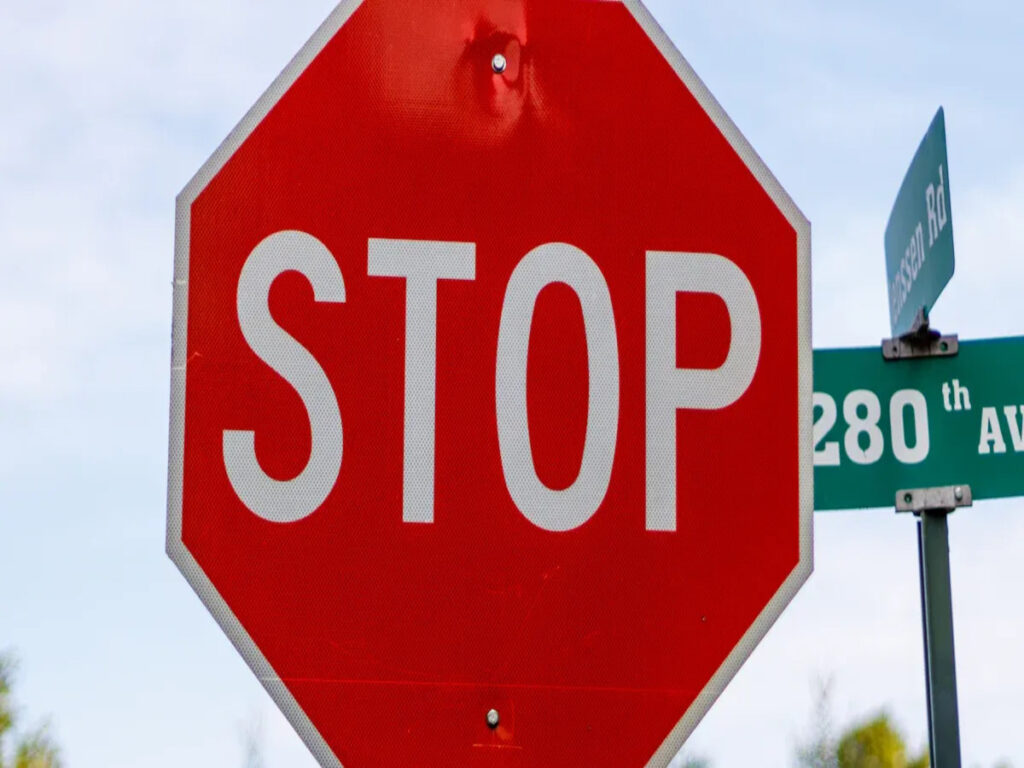
Variations provinciales
Les provinces et les territoires du Canada utilisent des règles nationales pour les signes d'avertissement. Chaque région modifie certaines règles pour les besoins locaux. La plupart des panneaux d'avertissement se ressemblent partout. Cela aide les conducteurs à les voir et à rester en sécurité. Certaines provinces ont des règles spéciales sur la façon dont les conducteurs utilisent les routes.
- Québec permet aux conducteurs d'utiliser la voie gauche pour passer ou tourner à gauche. D'autres provinces permettent aux conducteurs utiliser la voie plus librement.
- La Colombie-Britannique dit aux conducteurs de quitter la voie de gauche si une autre voiture arrive. Mais les conducteurs peuvent toujours voyager dans cette voie.
- L'île du Prince Edward fait du klaxon des conducteurs lors de la réussite. La Nouvelle-Écosse suggère de klaxonner, Mais l'Ontario ne l'exige pas.
- Le Québec et la Colombie-Britannique ont besoin de chauffeurs pour utiliser les pneus d'hiver. L'Ontario n'a pas cette règle.
- Le Québec permet aux conducteurs de tourner à droite sur les feux rouges. Mais sur l'île de Montréal, Ce n'est pas autorisé.
- Le Québec ne laisse pas les conducteurs utiliser des propriétés privées pour sauter des feux de circulation. D'autres endroits n'ont pas cette règle.
Ces règles montrent comment chaque province modifie les signes d'avertissement et les signaux pour ses propres besoins.
Québec et signes bilingues
Québec a les règles les plus strictes pour signes d'avertissement bilingues. Le français doit être la langue principale sur tous les signes publics. Cela comprend des panneaux d'avertissement et des feux de circulation. La loi dit que les mots français doivent être deux fois plus importants que toute autre langue. Cette règle est pour les panneaux de magasin, panneaux d'affichage, et les publicités en ligne vues par les gens du Québec. Le Office québécois de la langue française vérifie si les gens suivent les règles. Ils peuvent donner des amendes si quelqu'un enfreint la loi. Le français doit toujours être facile à voir et à lire, Même sur les signes électroniques. D'autres provinces ont des règles plus faciles pour les signes d'avertissement bilingues. Dans la plupart des endroits, Les signes bilingues ne sont pas requis ou ont moins de règles. Les règles du Québec sont beaucoup plus strictes.
Note: Les règles du Québec aident à garder le français fort et à rendre les signes faciles à voir pour tout le monde.
Zones frontalières et signaux transfrontaliers
Les zones frontalières du Canada changent de panneaux d'avertissement pour aider les voyageurs des États-Unis. Ces endroits utilisent des symboles supplémentaires ou des mots plus gros pour aider les gens à voir les signes. Certains panneaux de trafic près de la frontière montrent à la fois des unités métriques et impériales. Cela aide les conducteurs à comprendre et à garder les choses claires. Les panneaux d'avertissement dans ces domaines suivent des règles spéciales pour les passages à niveau. Cela continue de voyager en sécurité et en douceur. La façon dont les signaux d'avertissement fonctionnent dans les zones frontalières aident les conducteurs locaux et visiteurs. Cela s'assure que tout le monde peut voir et comprendre les signes.
Mise à jour et panneaux spéciaux de circulation routière
Signes d'avertissement à la retraite et spéciaux
Le Canada a utilisé de nombreux panneaux d'avertissement différents au fil des ans. Certains anciens panneaux d'avertissement des années 1970 sont encore à Terre-Neuve et au Labrador. Un rare «glissant lorsqu'il est mouillé’ Le signe avec une image spéciale est uniquement sur l'itinéraire 490 Près de Stephenville. La «colline escarpée’ panneau utilisé pour montrer une voiture à droite, Mais ce style n'est pas utilisé maintenant. Les conducteurs voient parfois des panneaux leur dire de rester à gauche ou à droite d'une île, Mais ceux-ci se décolorent sur l'île Bell. Les signes avertissant des chutes sont toujours courants, Surtout sur la route 410 Près de Fleur-de-Lys. Des panneaux de passage pour piétons ont montré une fois un homme avec un chapeau, qui a commencé à parler de genre. Les panneaux de passage à la cour de jeux ont montré un garçon chassant une balle, Et les gens en ont parlé aussi. Des panneaux de traversée scolaire ont utilisé une fille et un garçon, Mais dans les années 1990, Les signes se ressemblaient plus partout. Quelques rares «arrêtez-vous à l'avance’ Les panneaux des années 1970 sont toujours proches de l'itinéraire 440 Dans Cox’s Cove. Les panneaux d'avertissement de bosse de cette époque avaient des flèches plus larges que les nouvelles.
Les matériaux et les styles de signes ont changé au fil du temps. Dans le passé, Les signes étaient en bois avec des coins arrondis. Dans les années 1970, Les panneaux en acier sont devenus courants parce qu'ils durent plus longtemps et sont plus faciles à prendre en charge. Les polices et les photos sur les signes ont également changé. La police Clearview a été utilisée dans 2009, Mais l'autoroute gothique est revenue 2016. Quelques signes de règles, Comme «Pas de passage lorsque la ligne continue est dans votre voie’ et «Restez bien sauf pour passer,’ sont toujours des années 1970. Depuis 2009, De nouveaux panneaux d'avertissement sont sortis, Comme mis à jour «Arrêtez-vous à l'avance,’ «Slippery lorsqu'il est mouillé,’ «Colline escarpée,’ «Fall Rock,’ «La route divisée commence / se termine,’ «Bridge étroit,’ Et le premier «rendement à l'avance’ Connectez-vous dans la province.
Les contrôles et tests réguliers aident à continuer à bien fonctionner les panneaux. Ces chèques s'assurent que les signes d'avertissement et les signaux sont faciles à voir et à corriger pour tous les conducteurs.
Mises à jour standard et nouveaux signaux
Le MUTCDC obtient de nouvelles mises à jour pour répondre à de nouveaux besoins et technologies de sécurité. Les experts et le public aident à décider quels changements sont nécessaires. Les mises à jour récentes améliorent les panneaux d'avertissement et les signaux pour tout le monde. Le manuel a maintenant de nouvelles choses pour la sécurité des piétons et des vélos, Comme des lumières clignotantes spéciales et de meilleures lignes de passage pour piétons. Les nouvelles règles pour les limites de vitesse regardent plus de choses, Comme l'histoire de la route et de l'accident. Il existe également de nouveaux panneaux et signaux pour les véhicules automatisés pour aider à les tester et à les utiliser en toute sécurité. Les bornes de recharge de véhicules électriques ont désormais leurs propres signes.
La vérification et les tests sont importants pour garder les panneaux d'avertissement qui fonctionnent bien. Les agences effectuent des contrôles et des tests réguliers pour voir si des panneaux d'avertissement et des signaux sont en bon état. Les équipes de maintenance utilisent ces vérifications pour trouver et résoudre les problèmes rapidement. Les chèques aident également à mettre à jour les panneaux pour faire correspondre les nouvelles règles. Cela s'assure que les panneaux d'alerte et les signaux fonctionnent correctement et gardent les routes en sécurité. La vérification et les tests aident le système d'avertissement à répondre aux nouveaux besoins de sécurité.
Vérification, essai, Et les agences de soins réguliers aident à garder les panneaux d'avertissement qui fonctionnent bien. Les chèques s'assurent que tous les panneaux d'avertissement et les signaux respectent les règles d'aujourd'hui et faites leur travail.
Le Canada n'utilise pas les États-Unis. Mutcd. Il utilise les normes MUTCDC et CSA pour les panneaux routiers. Les conducteurs doivent savoir que certains signes se ressemblent mais sont différents de manière importante. Le tableau ci-dessous montre quelques points principaux:
| Aspect | États-Unis (Mutcd) | Canada (Mutcdc / csa) |
|---|---|---|
| Forme du panneau d'avertissement | En forme de diamant jaune | En forme de diamant jaune |
| Utilisation des langues | Principalement anglais | Anglais et français dans certaines régions |
| Speed Units | Kilomètres par heure | Kilomètres par heure |
Les voyageurs pourraient voir des panneaux avec deux langues, unités métriques, ou symboles spéciaux. Ces choses peuvent être difficiles à comprendre au début. Pour plus d'informations, Découvrez ces ressources:
- Livre otm 5: Signes réglementaires
- Livre otm 6: Panneaux d'avertissement
- Livre otm 15: Traitements de passage pour piétons
Parlez-nous de vos propres expériences avec le Canadien ou les États-Unis. Signes routiers dans les commentaires!
FAQ
Quel est le mutcdc?
Le MUTCDC signifie manuel des dispositifs de contrôle de la circulation uniformes pour le Canada. Le Association des transports du Canada fait ce manuel. Il donne des règles pour les panneaux de signalisation, signaux, et marques au Canada.
Pourquoi le Canada utilise-t-il des panneaux de signalisation bilingues?
Le Canada utilise des panneaux de routes bilingues pour l'anglais et les français. Le Québec utilise uniquement le français sur ses signes. Le Nouveau-Brunswick et certains lieux fédéraux utilisent les deux langues. Cela aide les gens à connaître les règles et assure la sécurité de tout le monde.
En quoi les panneaux de limite de vitesse canadienne diffèrent-ils des États-Unis. signes?
Les panneaux de limite de vitesse canadienne montrent des kilomètres par heure. NOUS. Les panneaux de vitesse utilisent des miles par heure. Les conducteurs doivent surveiller ces unités, Surtout près de la frontière.
Toutes les provinces suivent les mêmes règles de panneaux routiers?
Les provinces respectent les normes nationales mais peuvent faire leurs propres règles. Le Québec utilise uniquement le français sur ses signes. D'autres provinces peuvent utiliser les deux langues ou ajouter des symboles spéciaux.
Où les conducteurs peuvent-ils trouver plus d'informations sur les panneaux de route canadiens?
Les conducteurs peuvent aller sur le site Web de l'Association des transports du Canada. Ils peuvent également vérifier les pages du département des transports provinciaux. Ces endroits ont des guides, manuels, et mises à jour sur les panneaux de signalisation et les règles.

